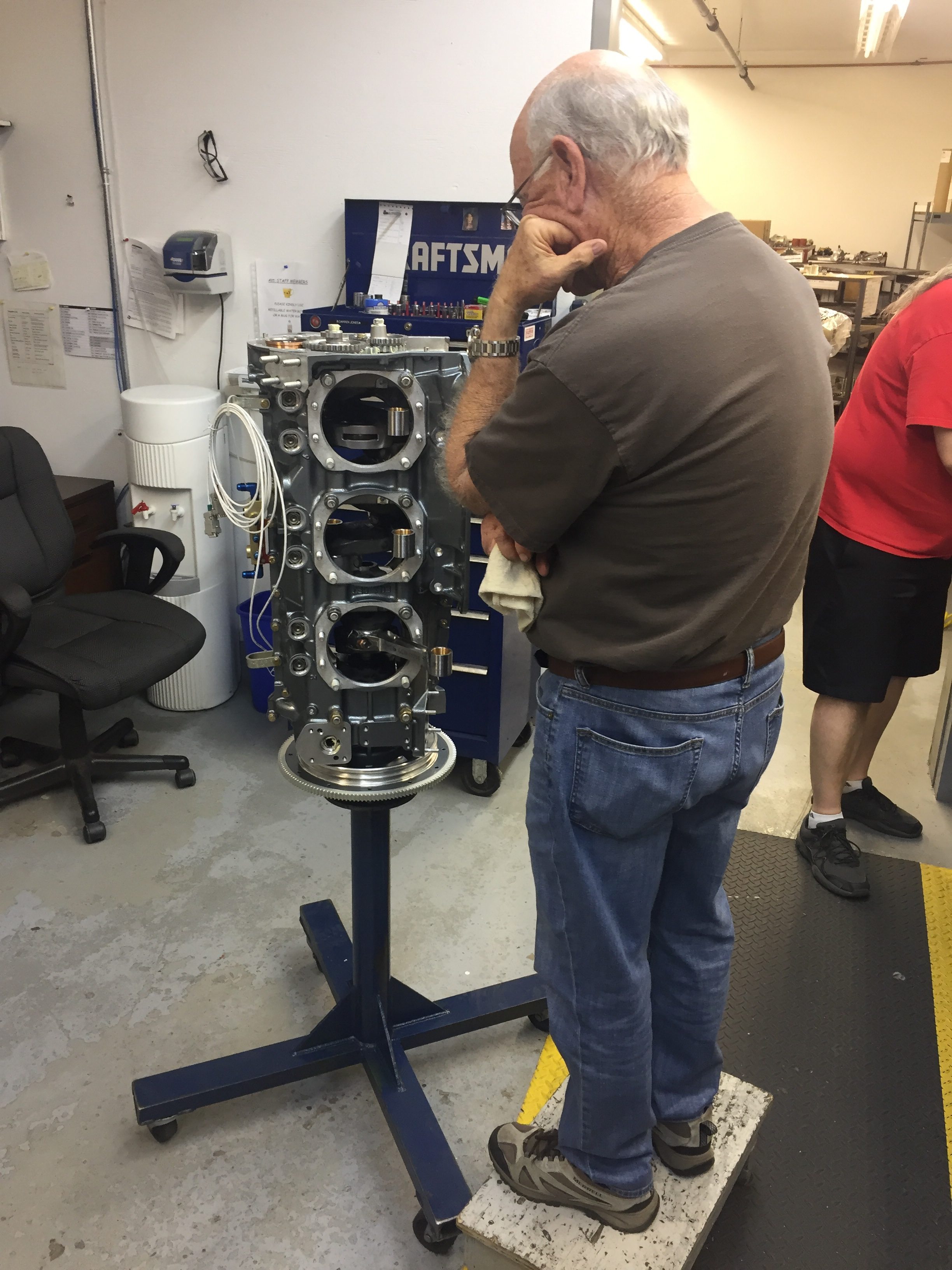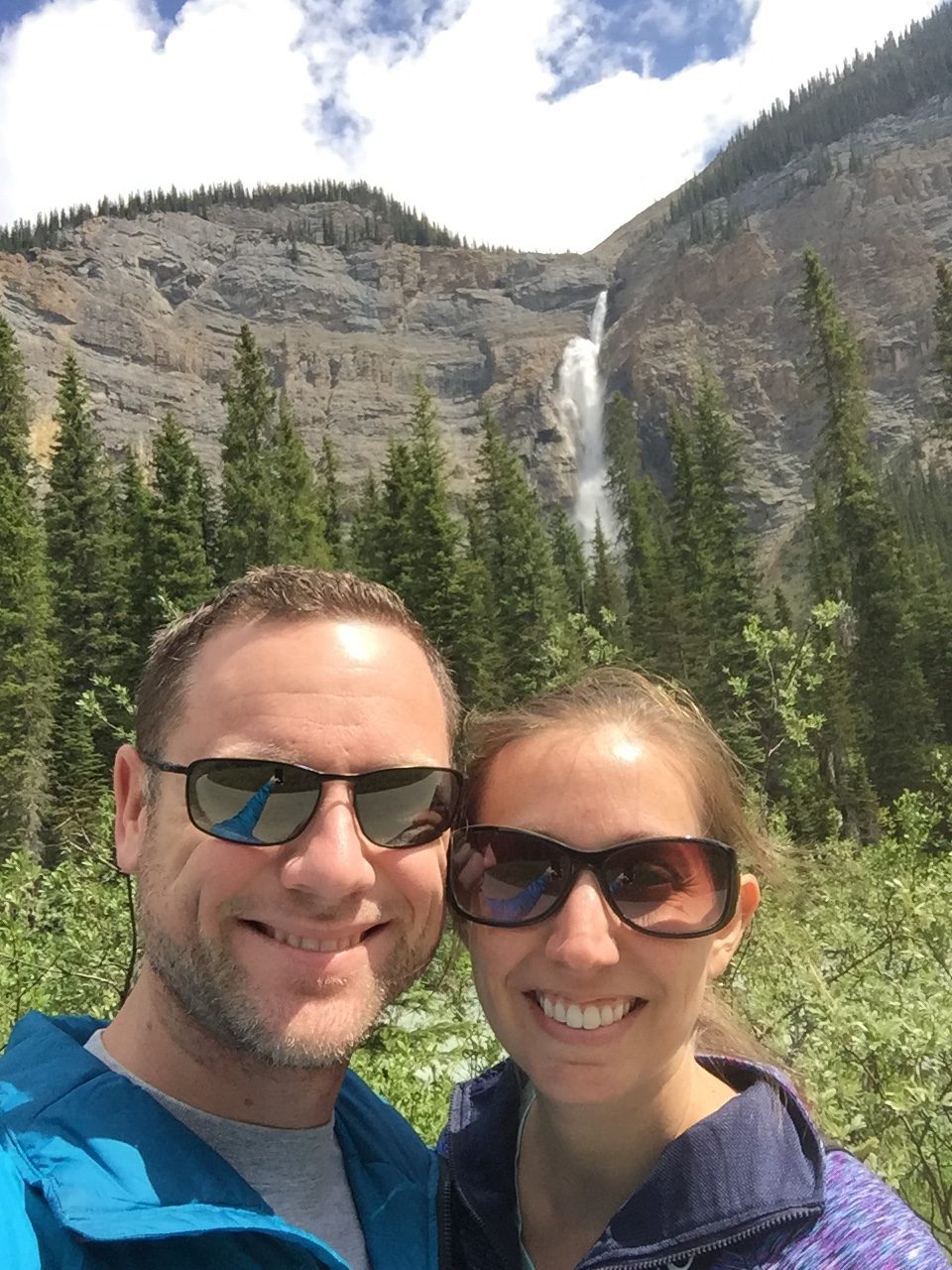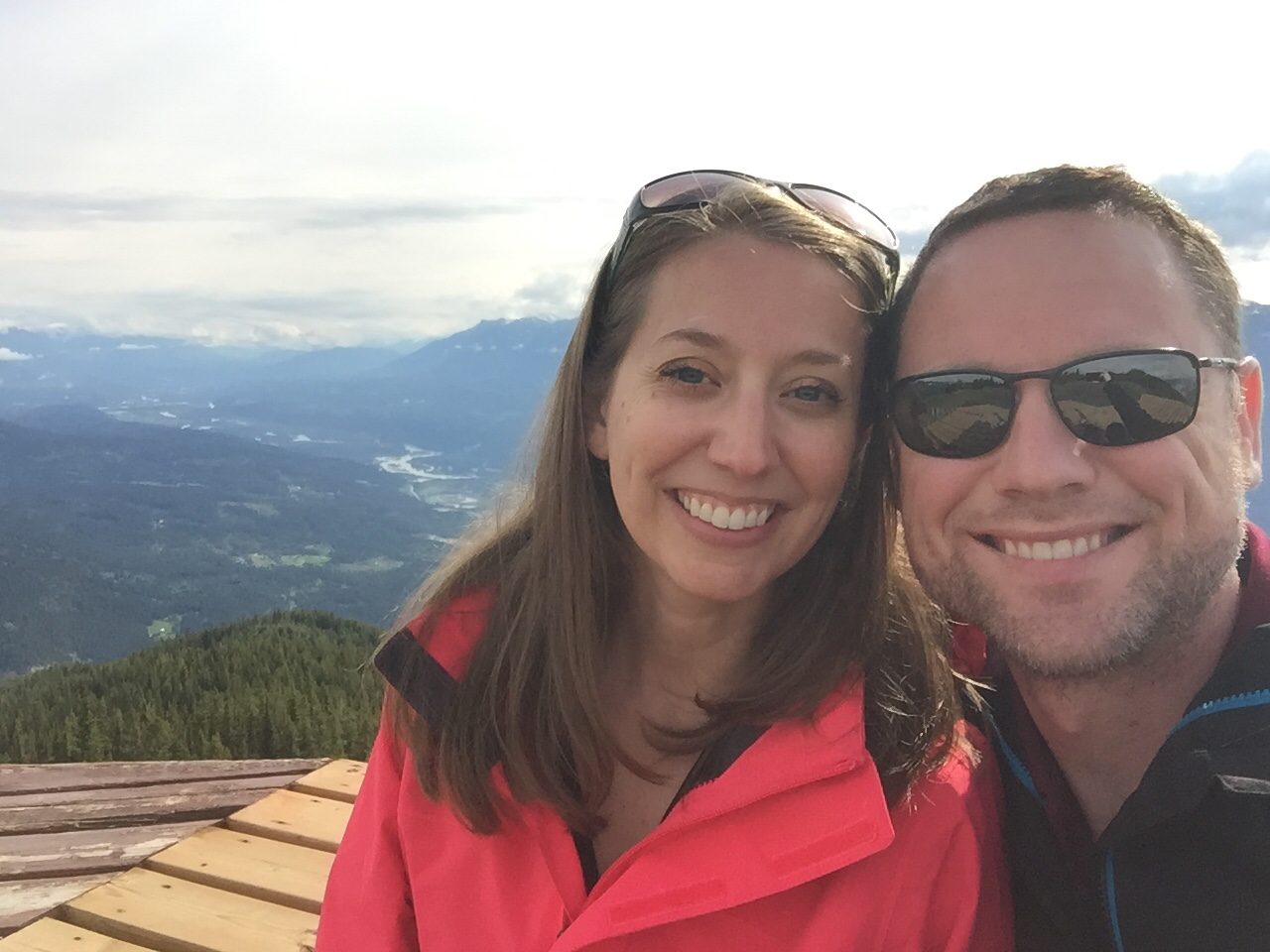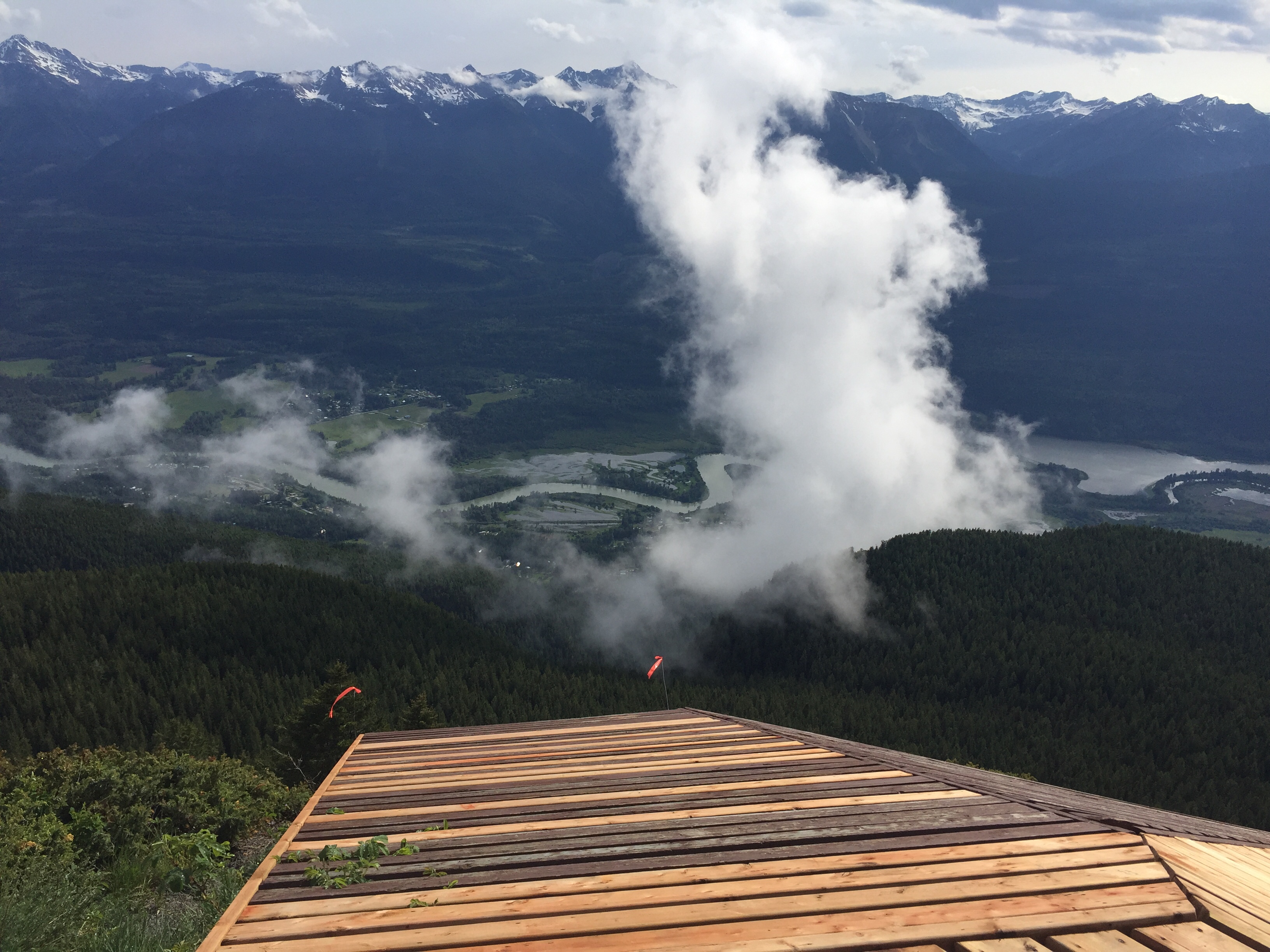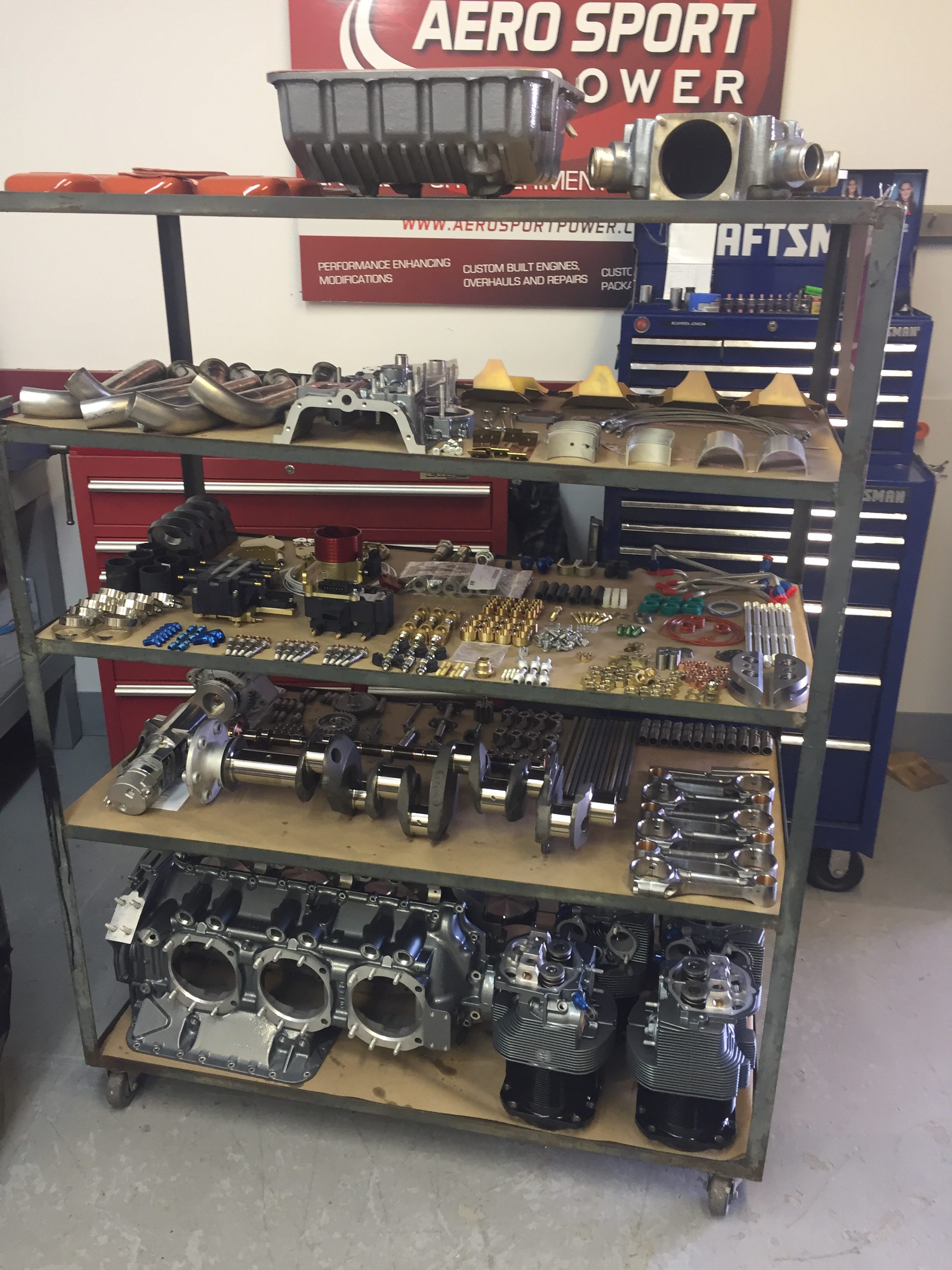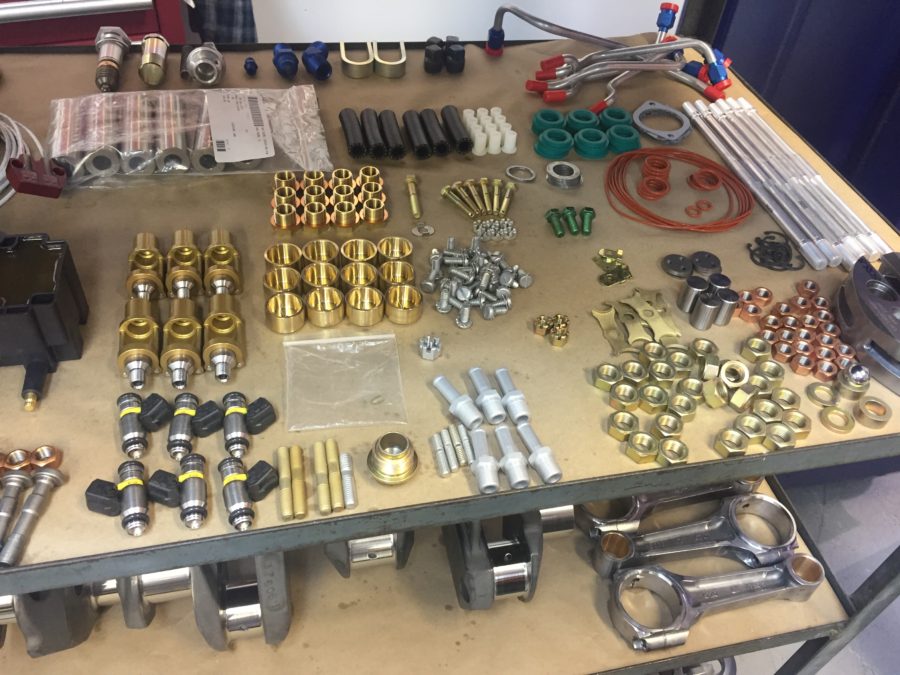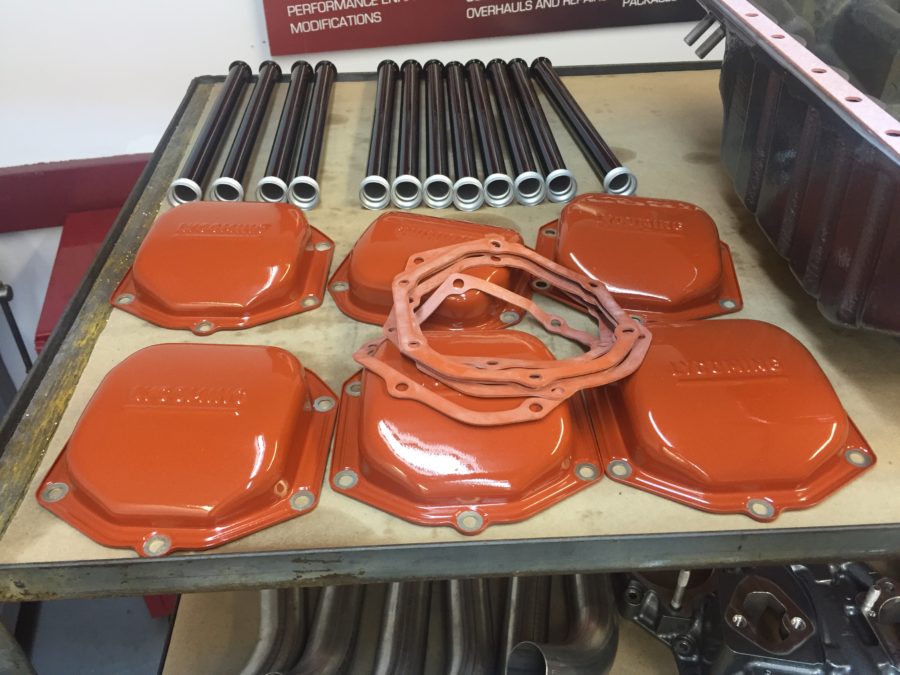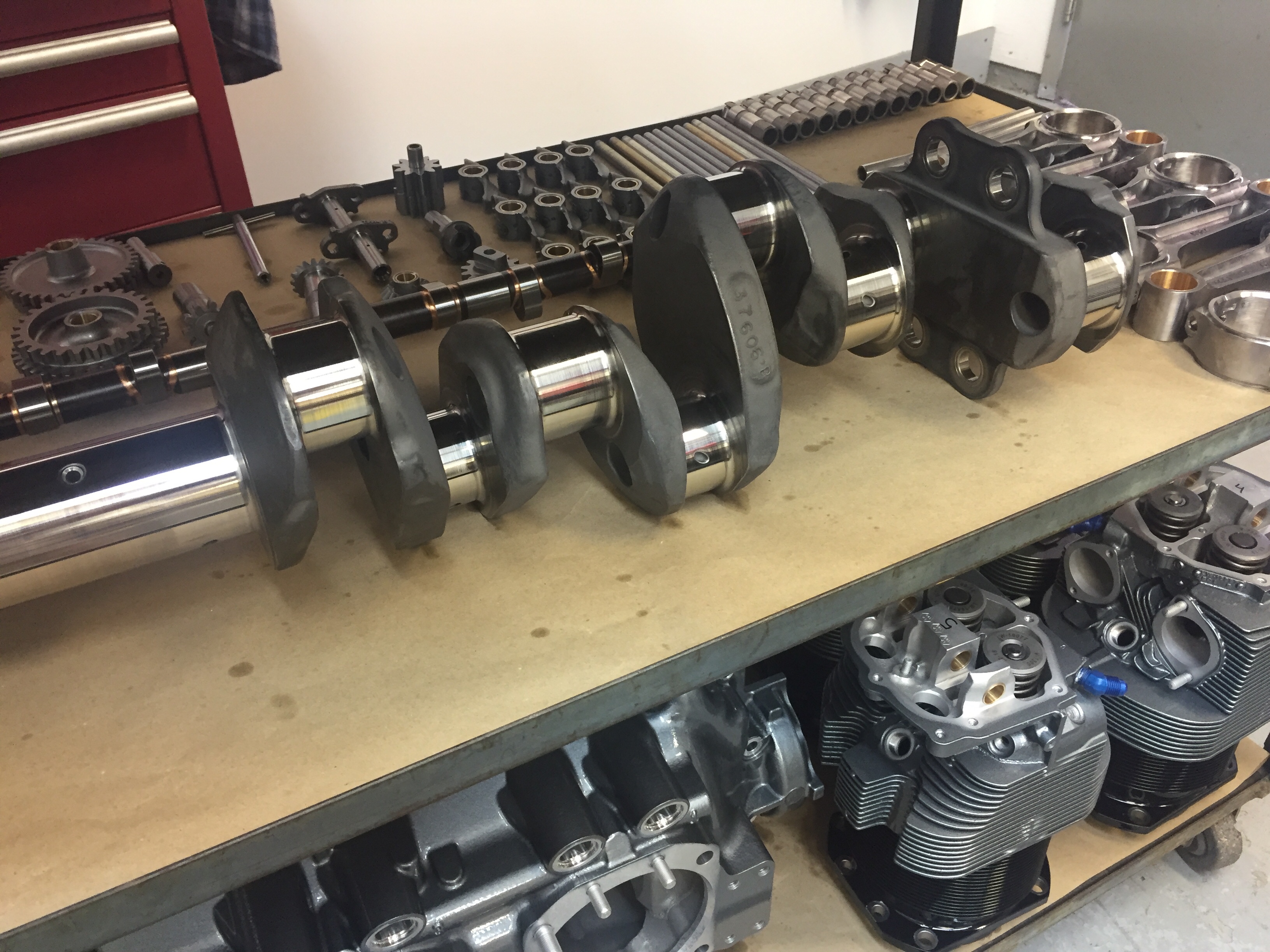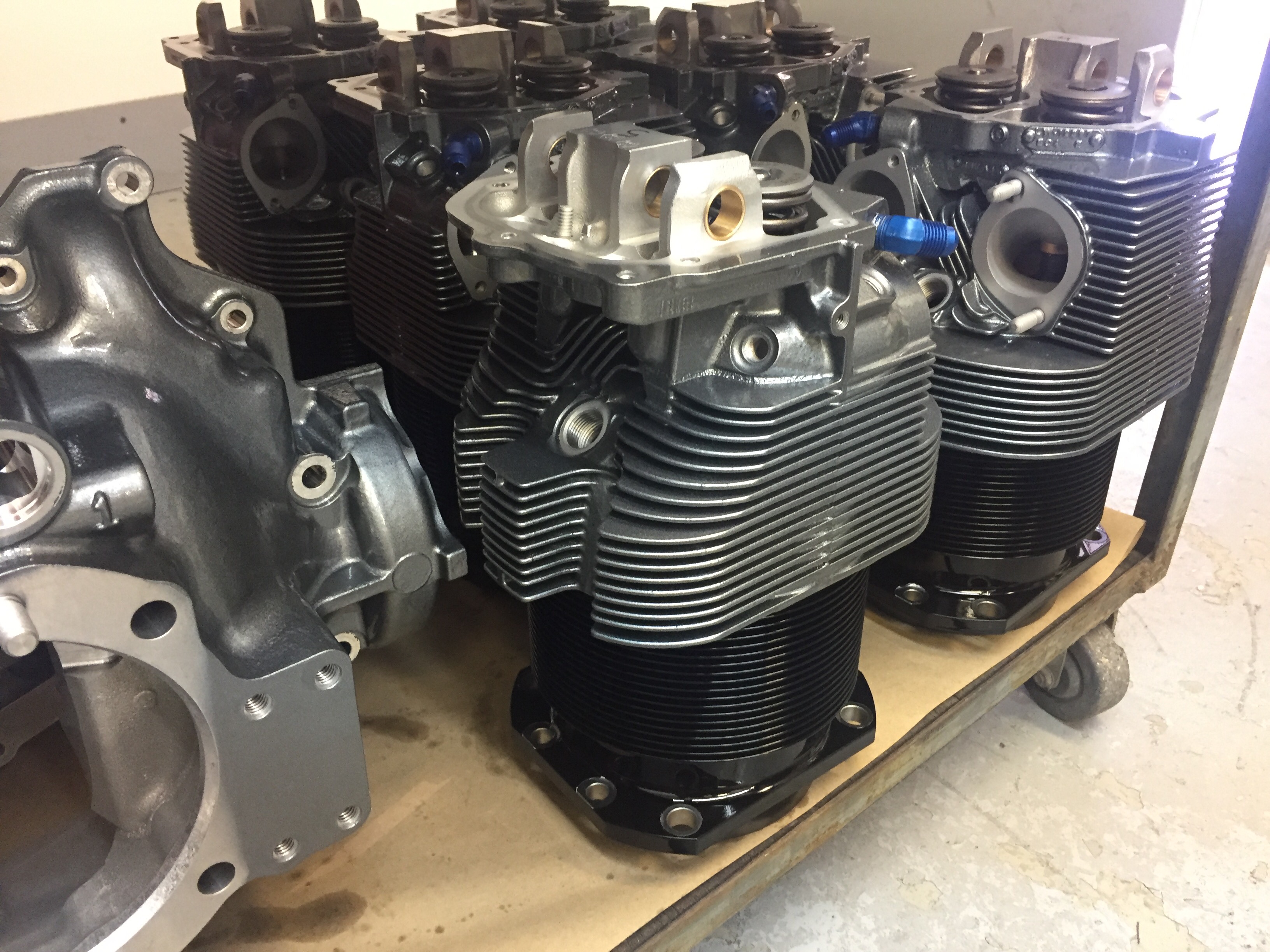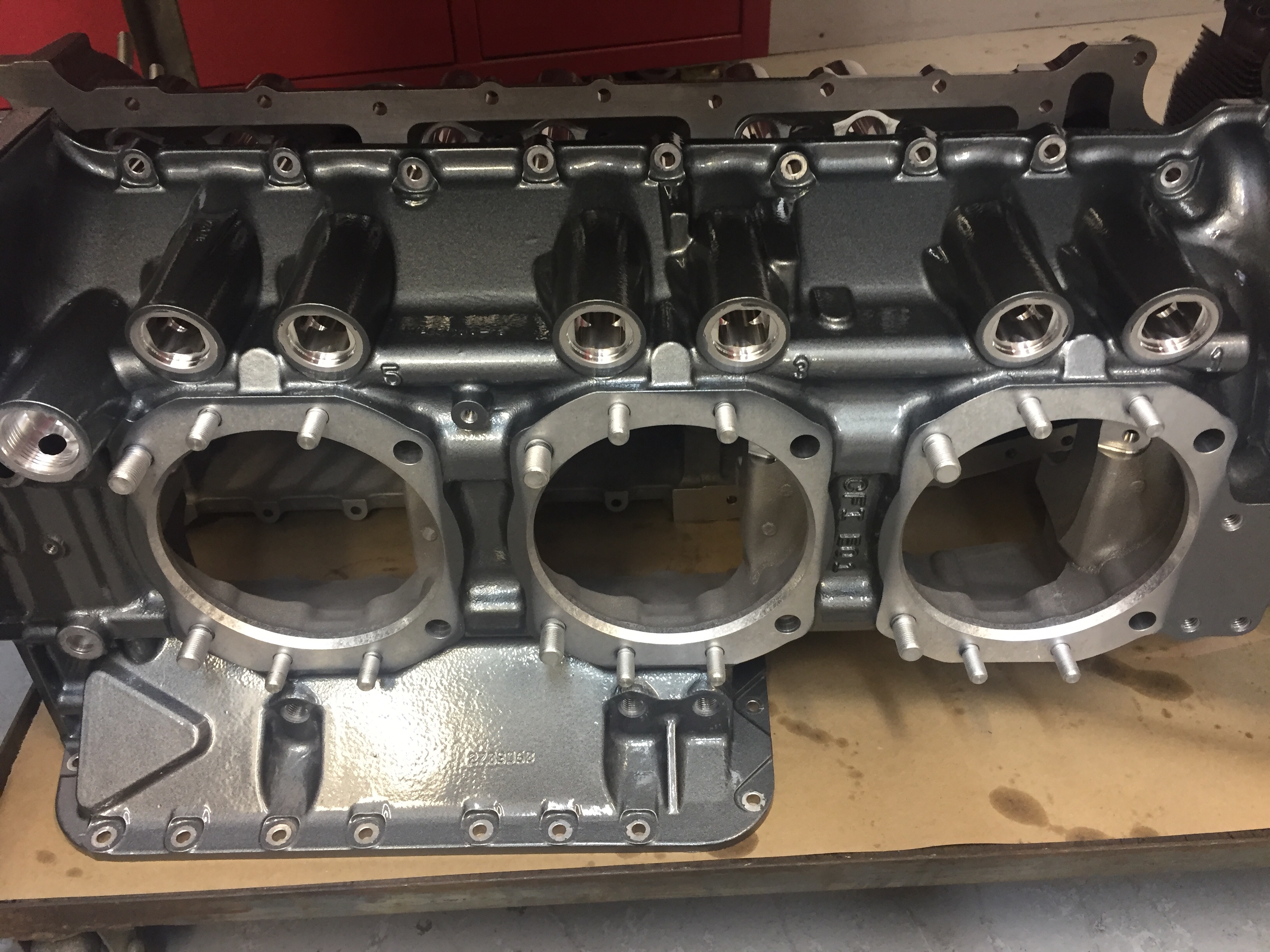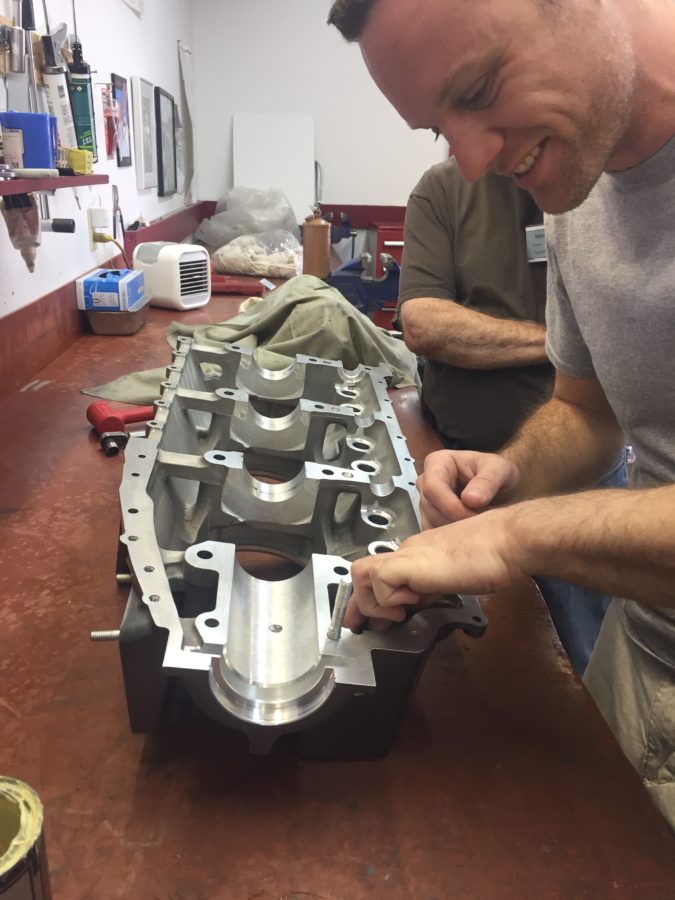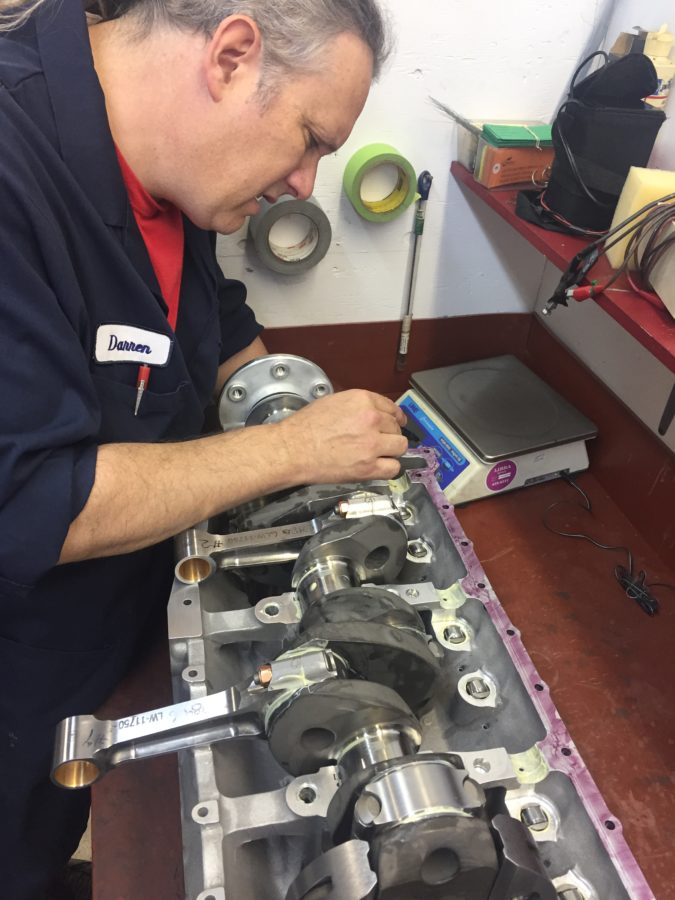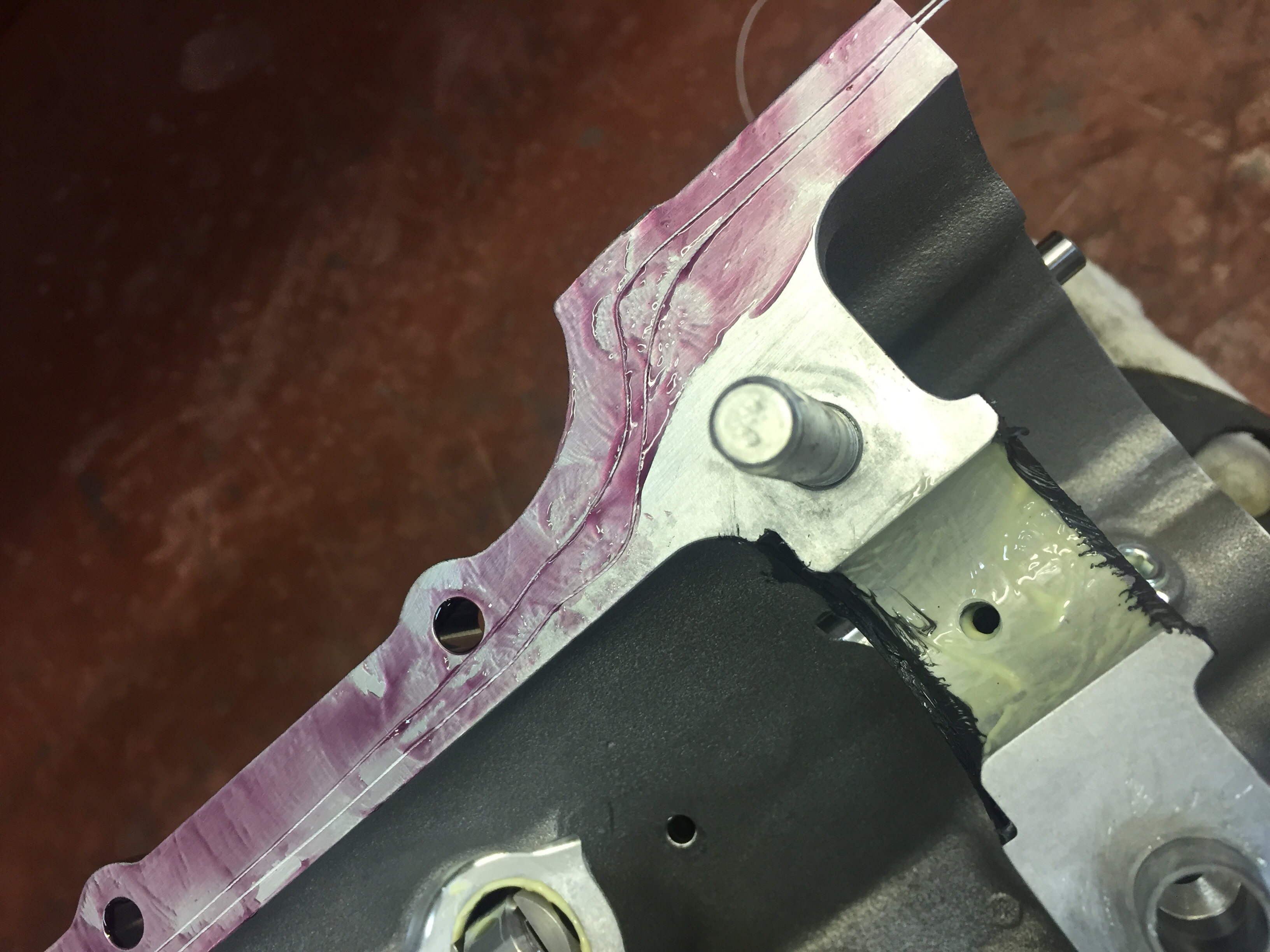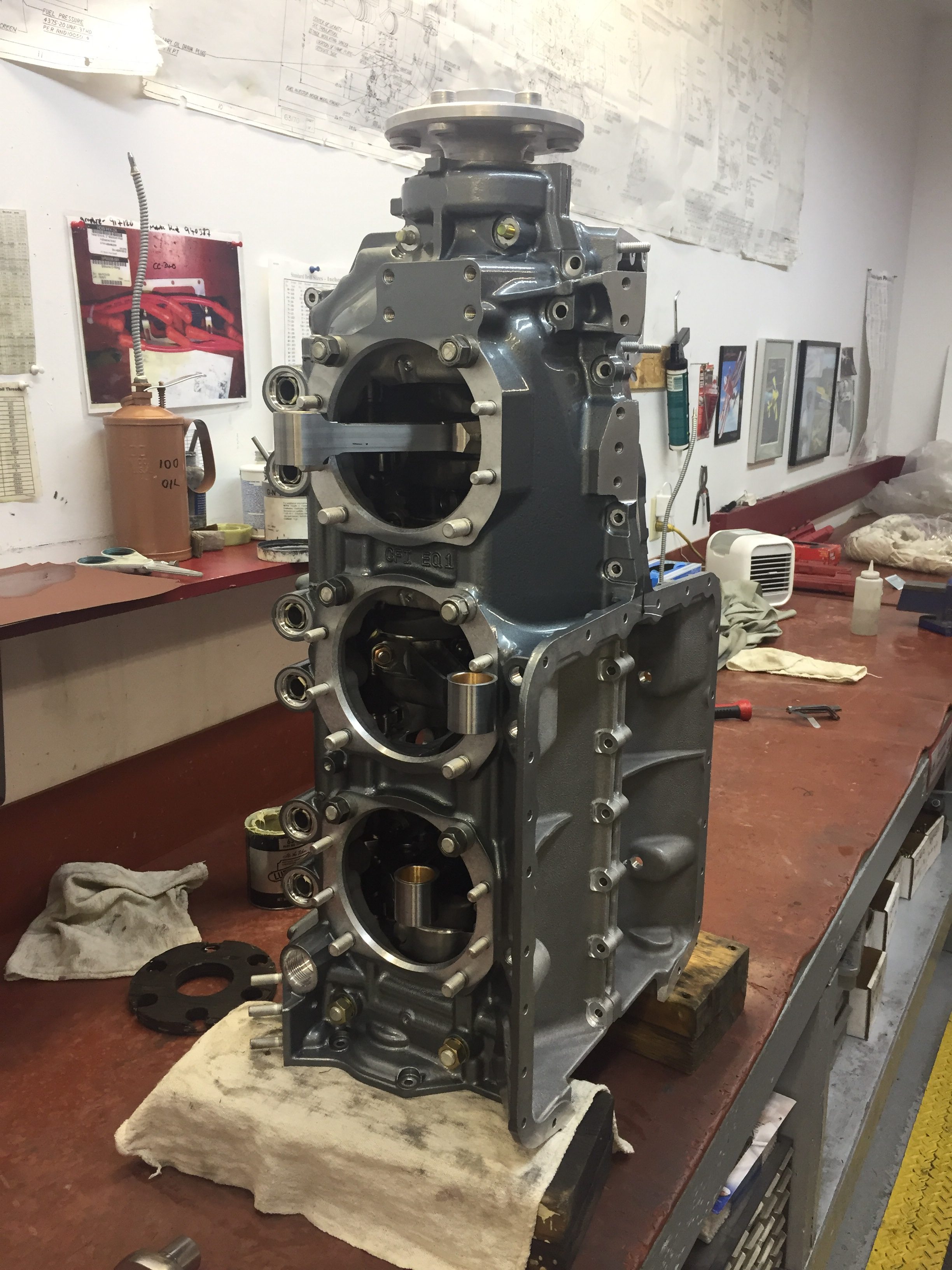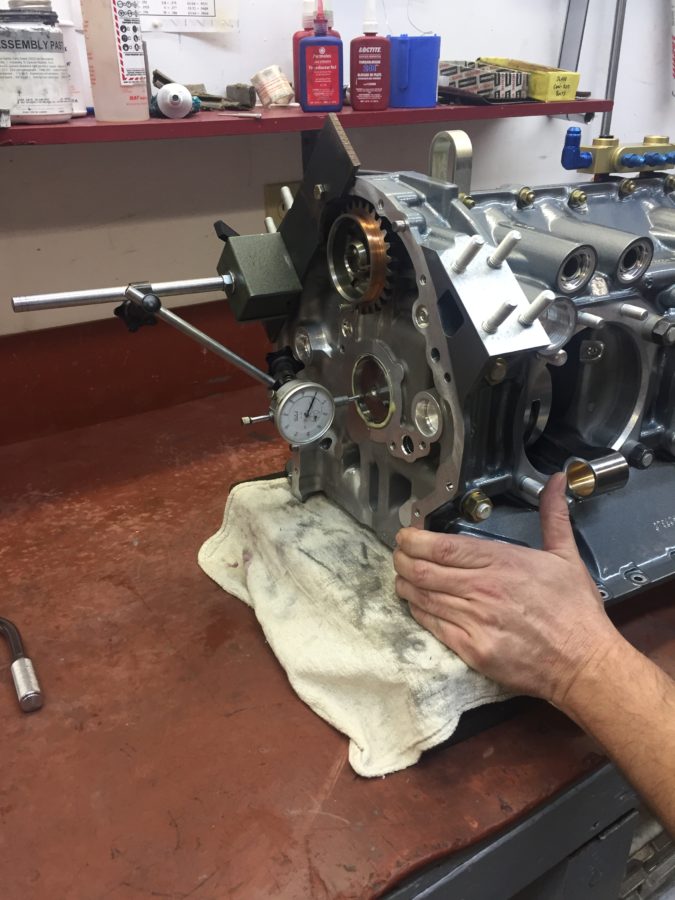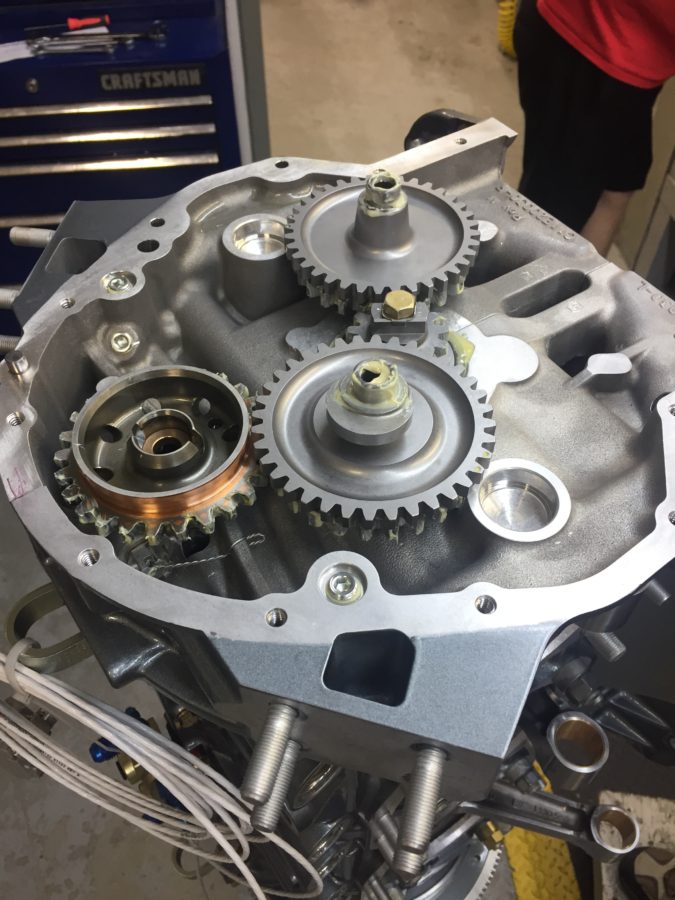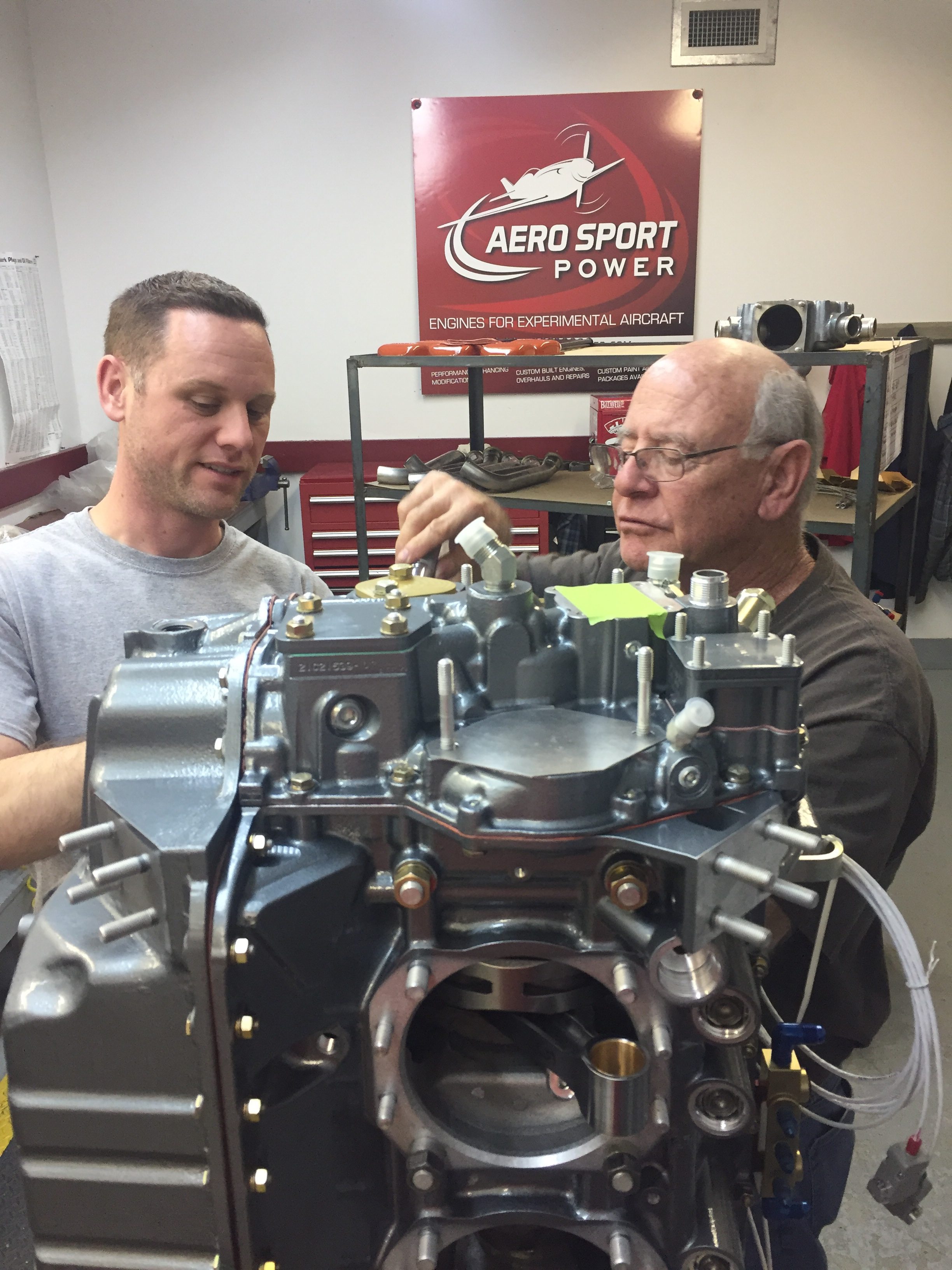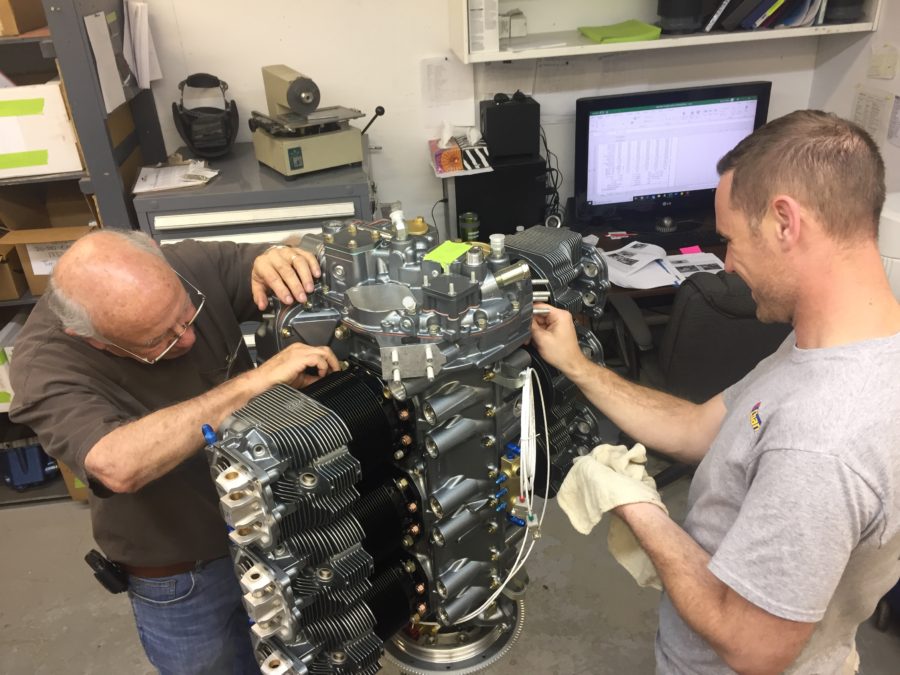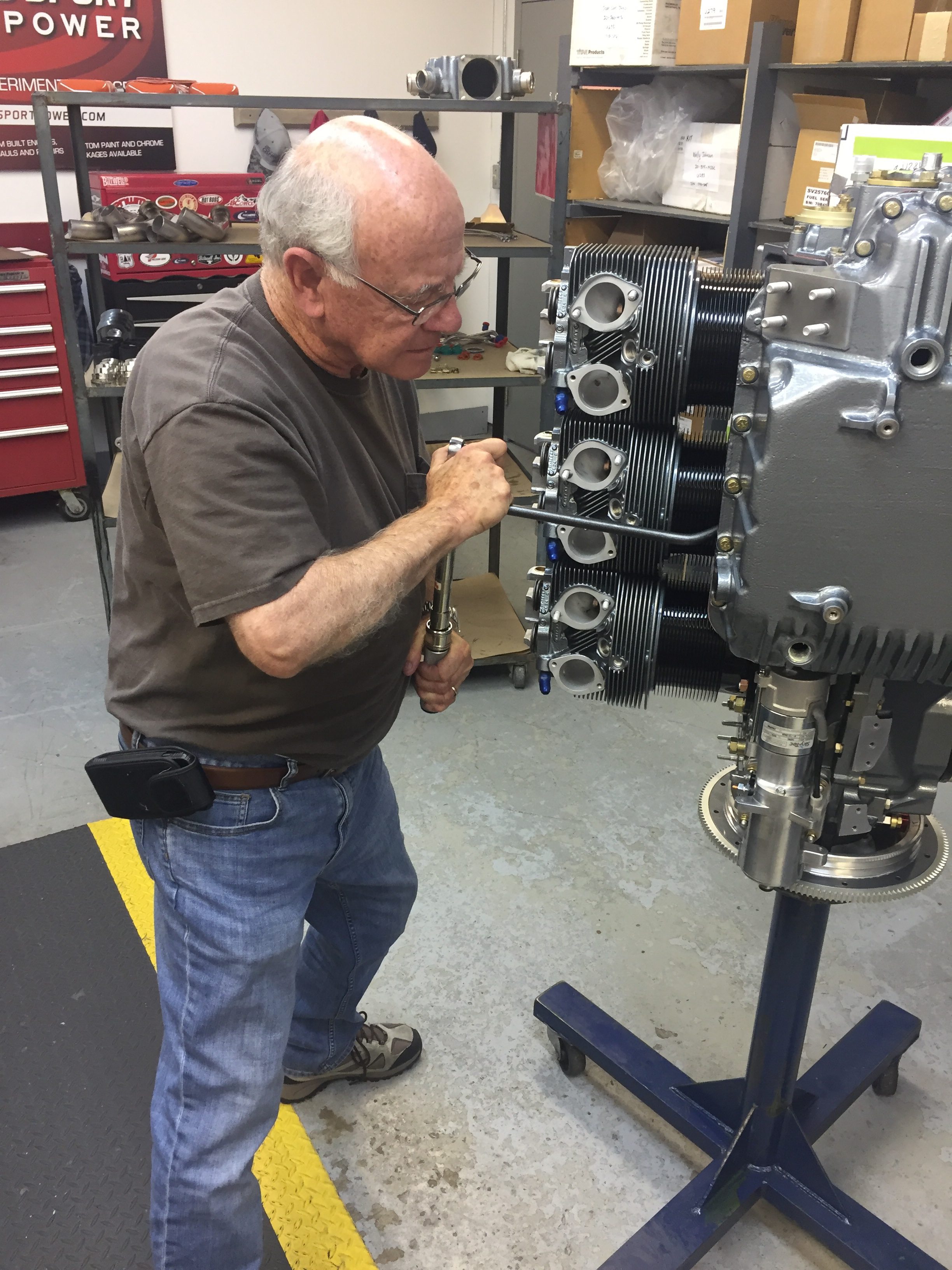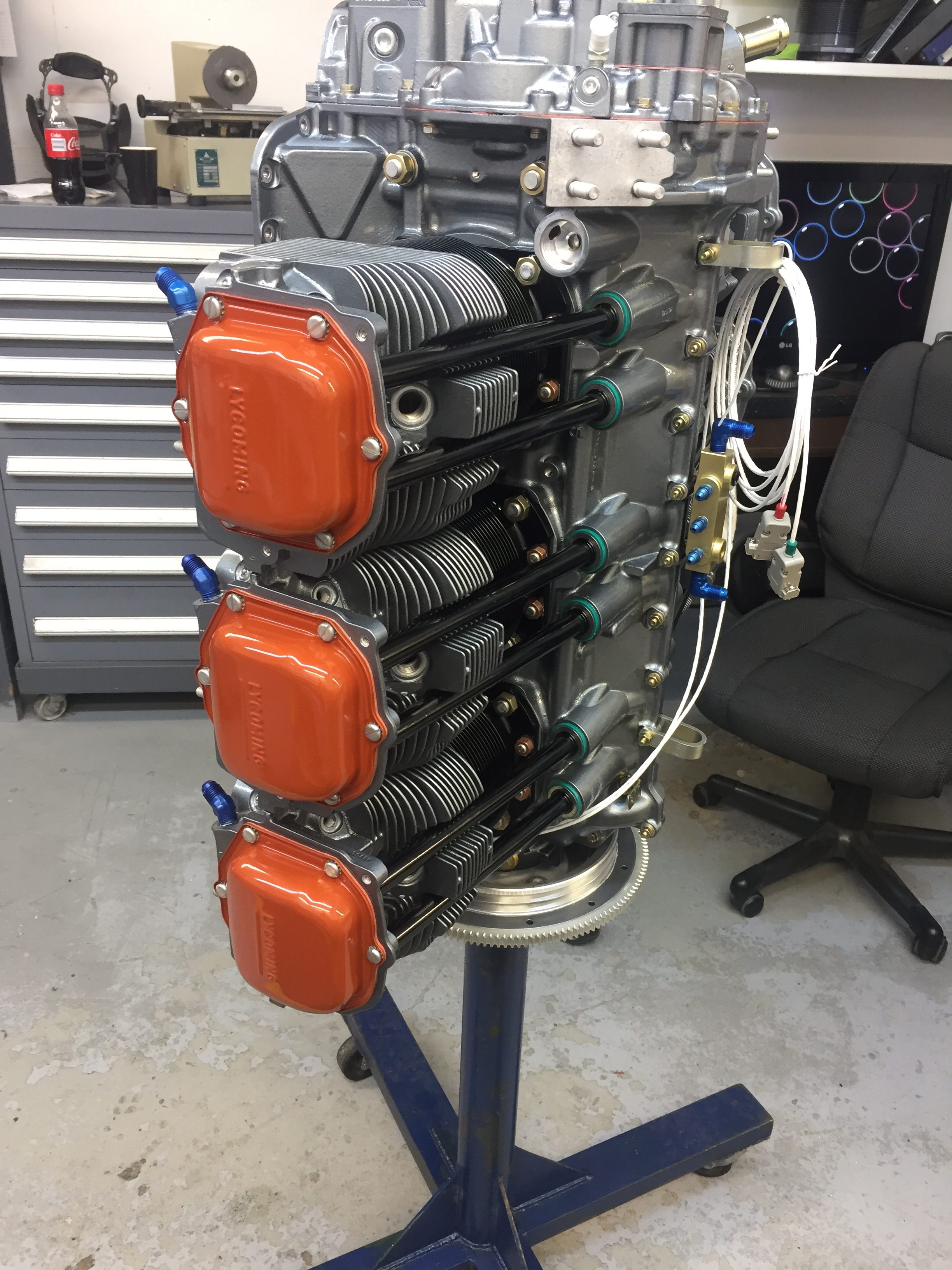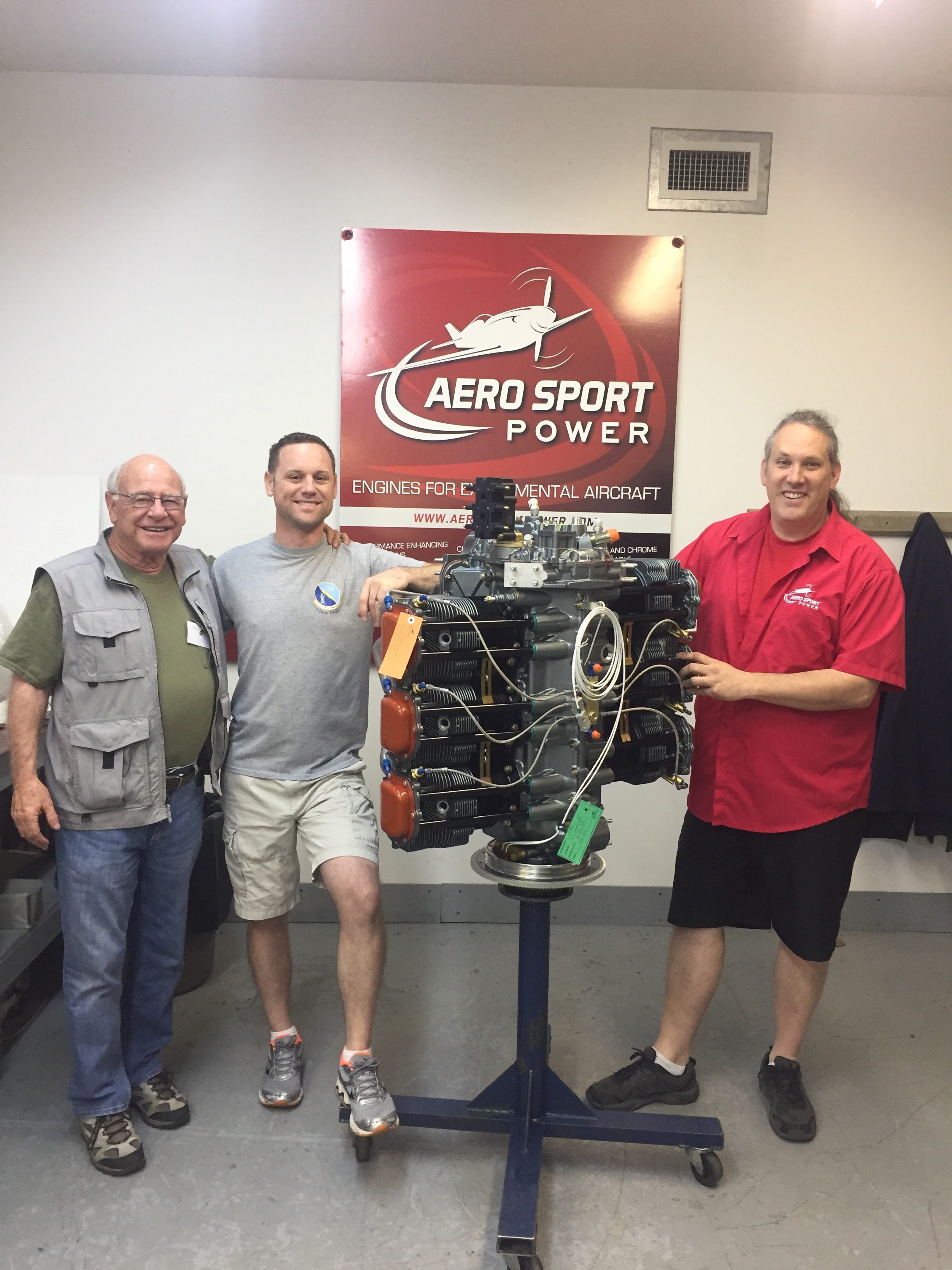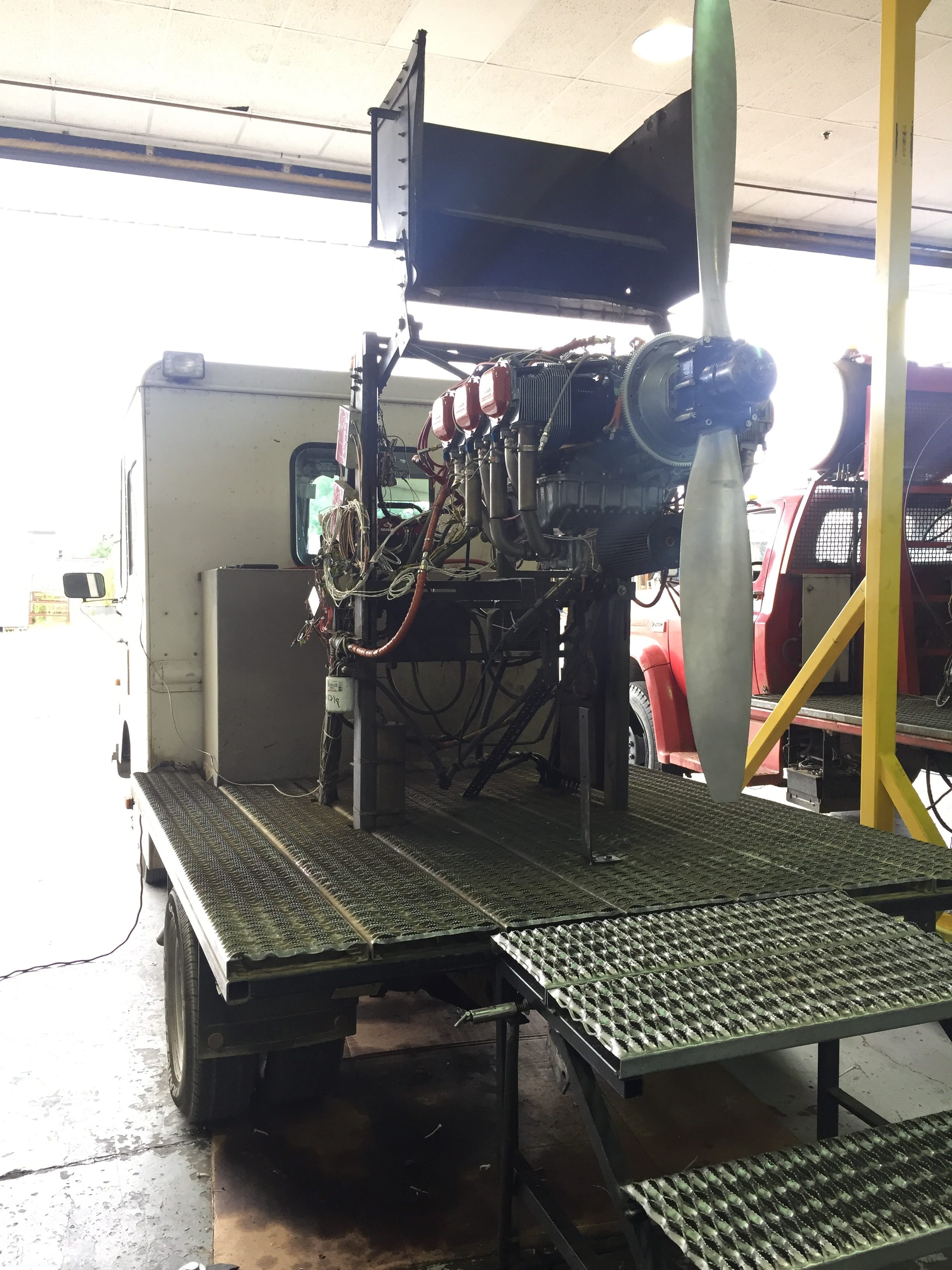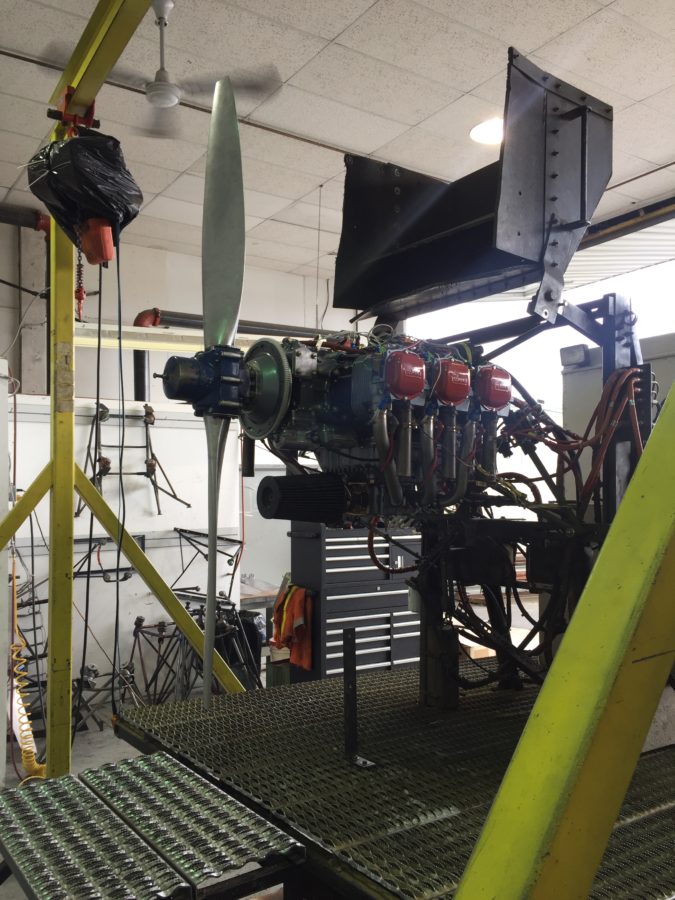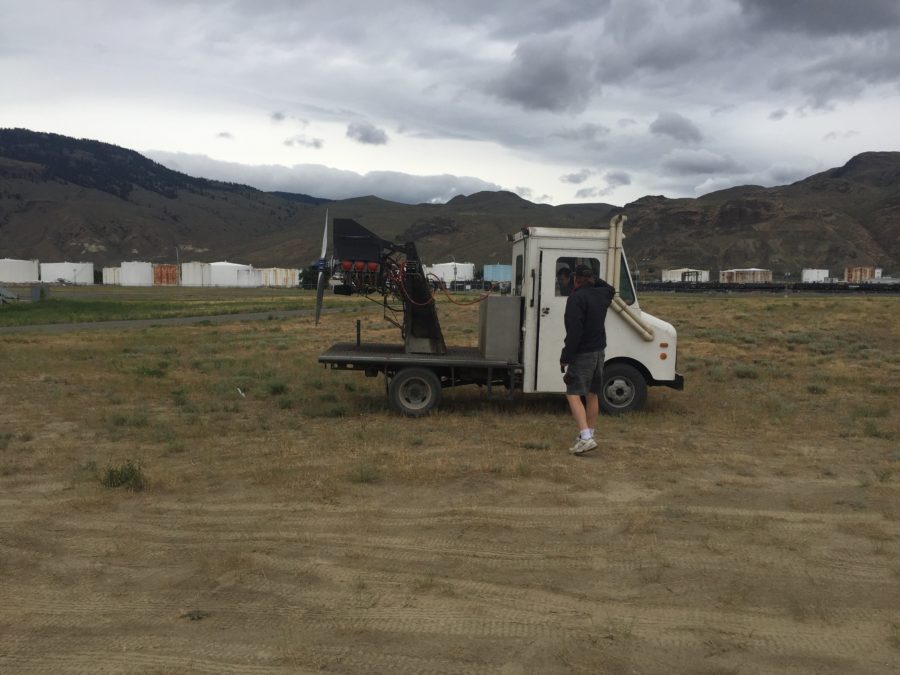Fair warning, there are lots of pictures in this post!
My dad and I were pretty darned excited (okay my dad was REALLY excited) about spending time together building my engine. We arrived at Aero Sport Tuesday morning with donuts and were instantly welcomed as family. Maybe it was the donuts, maybe it was my dad’s flirting with the receptionist. I don’t know, but it worked. We were in. Darren turned out to be our build guy so I really had a complete experience with him and couldn’t have asked for a better mentor. He showed us the whole shop, introduced us to folks and explained some of their equipment. We made it to a back assembly room where a cart sat containing all (most) of the parts for my engine – painted, prepped, and organized. We wasted no time and dove in starting with rods on the crankshaft. Darren let dad and I do pretty much everything with a sharp eye on us over our shoulders. This is exactly what we wanted, but we learned other folks may just want to sit back and watch a master at work which is just fine too.
One thing we quickly learned was how to properly lubricate EVERYTHING in the engine. Even bolts that were getting torqued were lubricated, something I had never heard of. The Lubriplate mixed with a little STP oil turned out looking like garlic sauce from Papa Johns and we put that crap on everything, just like you would with pizza. It protects the components during assembly, keeps oxygen and therefore rust at bay until operation, and lubricates the workings of the engine during first start until oil has really gotten everywhere. Our IPI (in process inspections) were completed by Darren as he double checked our torque values and work before proceeding on. It was apparent that Darren had done this before as proven when he picked up a journal bearing and by feel recognized the parts man had pulled the wrong part number. He gave us a task and ran off to the parts counter a few rooms over to retrieve the proper items. This happened a few times and showed that they are still improving their processes but highlighted the incredible amount of experience and knowledge all the employees there have about building engines.
The crankshaft monster quickly grew with rods and pistons before the case halves went on with journal bearings and a few accessories followed by the cylinders. It’s a lot of work, but it’s remarkably simple with pretty loose tolerances hence the inherent inefficiencies compared to a modern car engine let’s say. Lycomings have been around for a long damn time and not much has changed in the design even if manufacturing tolerances have been vastly improved. By the end of the day, we had what pretty much resembled an airplane engine including the accessory case on, for the first time at least. While putting on the cold air induction, we had a fit issue with the oil screen that was immediately handled by the machine shop who bored out a recess. The right tools make any job simple. That and having the right people who know what they hell they are doing. I sometimes think I should not own a Dremel, as I think I can CNC machine things freehand.
Day two started off with a Knock It Off, as we say in the Air Force. Darren wasn’t happy with having the tach drive shaft removed since it would create a leak point on the accessory gear case and be hard to seal. Even though I don’t need the tach drive and it meant pulling the sealed/gasket-ed case off, we did the right thing and removed it. The shaft adds a few ounces but can be left unattached to anything and is now properly sealed with the bearing and oil seal. We made the quick fix and all agreed we felt better. Dad even got to play with the Loctite that resembles grape jelly in looks but not taste. This is special gasket gel that only cures in the absence of oxygen. So it forms a rock solid gasket but any excess that oozes into the internal workings of the engine won’t cause any issues before it gets caught by the filter.
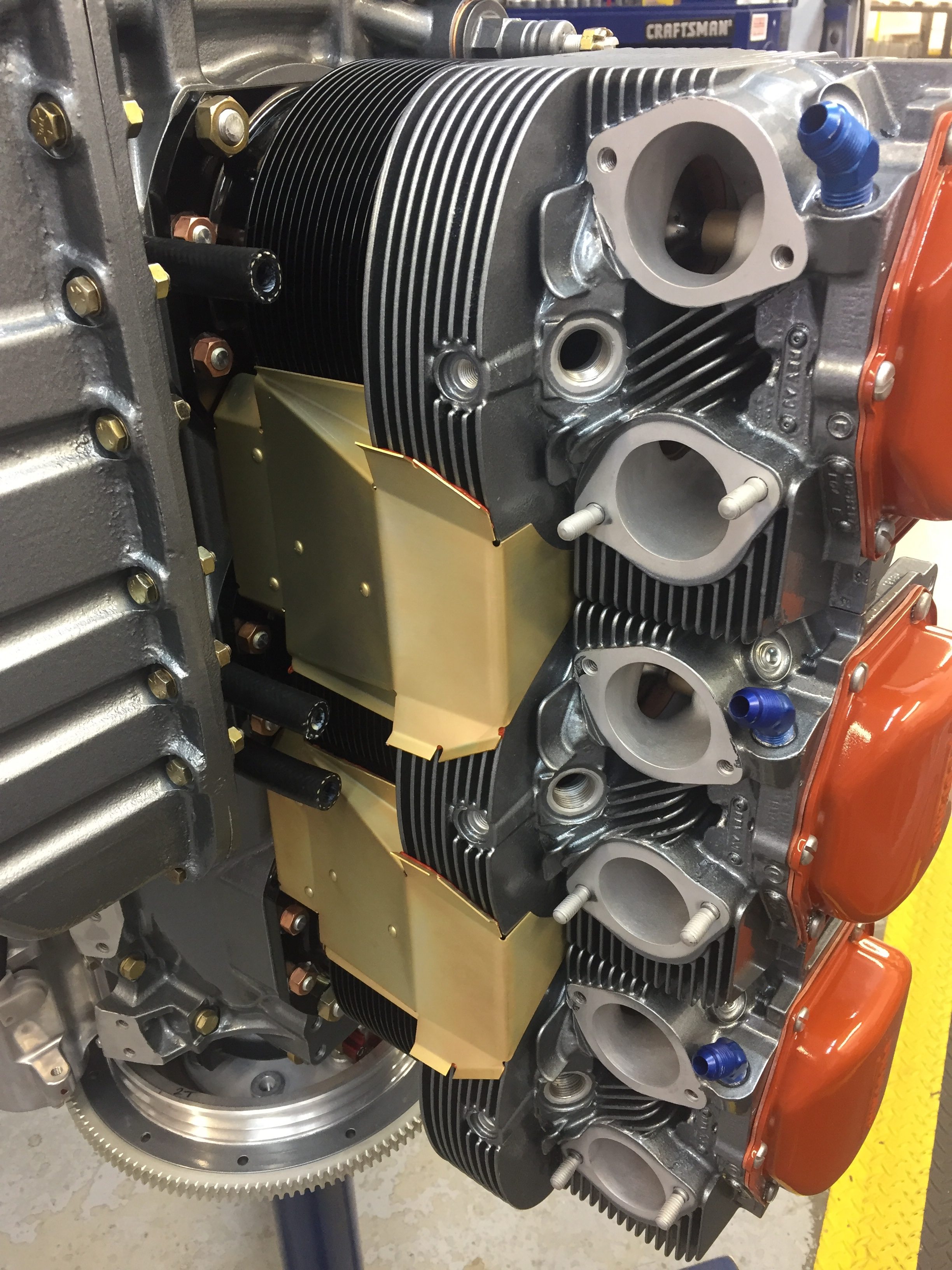
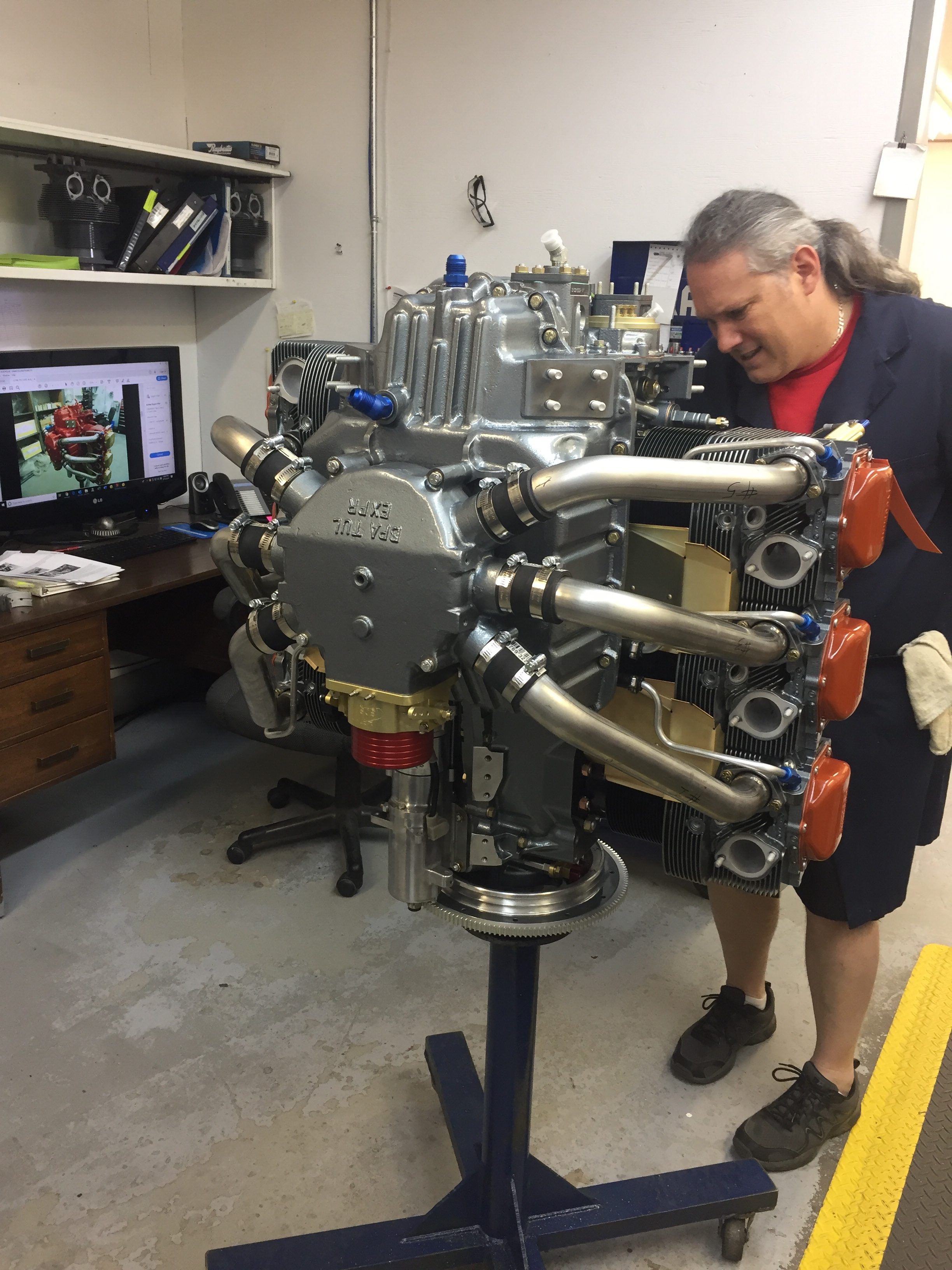
We fit the push rods and rockers in the heads and learned how to properly gap the valves along with a few neat tricks with safety wire that I have taken back home to others. Other than a crazy push rod that we suspect was cut and not remarked, it all went really smoothly and by lunch the cart of parts was just a lonely empty cart! After lunch, we bolted on a few SDS accessories to shift from building to prepping for first start. Dad and I took the afternoon off while the test department hung the engine onto the Test rig which looks like an old bread truck of some kind. I can only imagine the number of hours that thing has racked up going from their hangar to the field at the end of the runway about 1000 yards away. They are no stranger to various engine configurations and had the sensor and control package hooked up quickly. An old prop was bolted on and ground adjusted to that looks about right and she was ready for the next morning.
We awoke the next morning to a blustery wind bringing a chill from the mountains across the plains of western Canada. Oh wait, this isn’t a novel. It was freaking cold and drizzling the final morning but we braved the elements and watched the guys pre-oil the engine. Finally, it was time to burn some avgas so we followed the truck out to the field and held our breath as the tech turned the start key for the first time. We were warned it may not start the first time but I wasn’t too concerned about that. Sure enough, the second start attempt resulted in a few puffs of white smoke and a low rumble of our engine running for the first time! Lots of smiles and hugs and handshakes all around, it really was an awesome sight and sound to see something that we put so much work into start up and run like a champ. Dad and I built an engine (with a bit of help from Darren) and it’s alive!
Laura and I hopped in the truck and got to see a bit of the magic behind the scenes as they ran through the initial checks. Aero Sport does a few hours of running total to start the shake down and break in process. On each subsequent start, the engine fired off within a blade or two and only minor mixture (via the SDS knob) were made to keep temps under control. The tech said that’s typical with the rough cut universal baffle setup they have on the truck. As exciting as it was to see it run, we were hungry and cold, so let the pros finish up with the run time and headed inside to talk with Doug about some tips for our first start and break in.
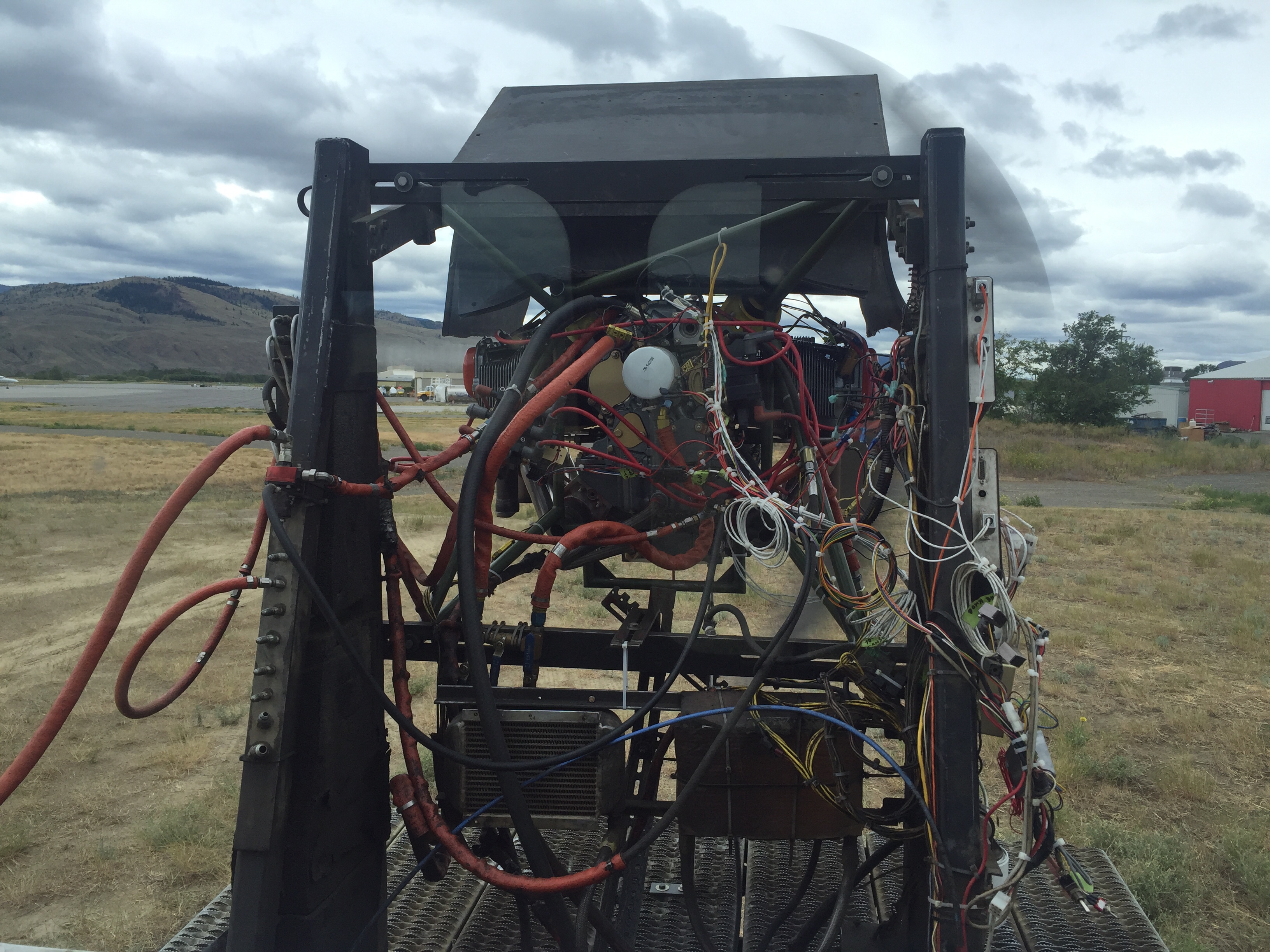
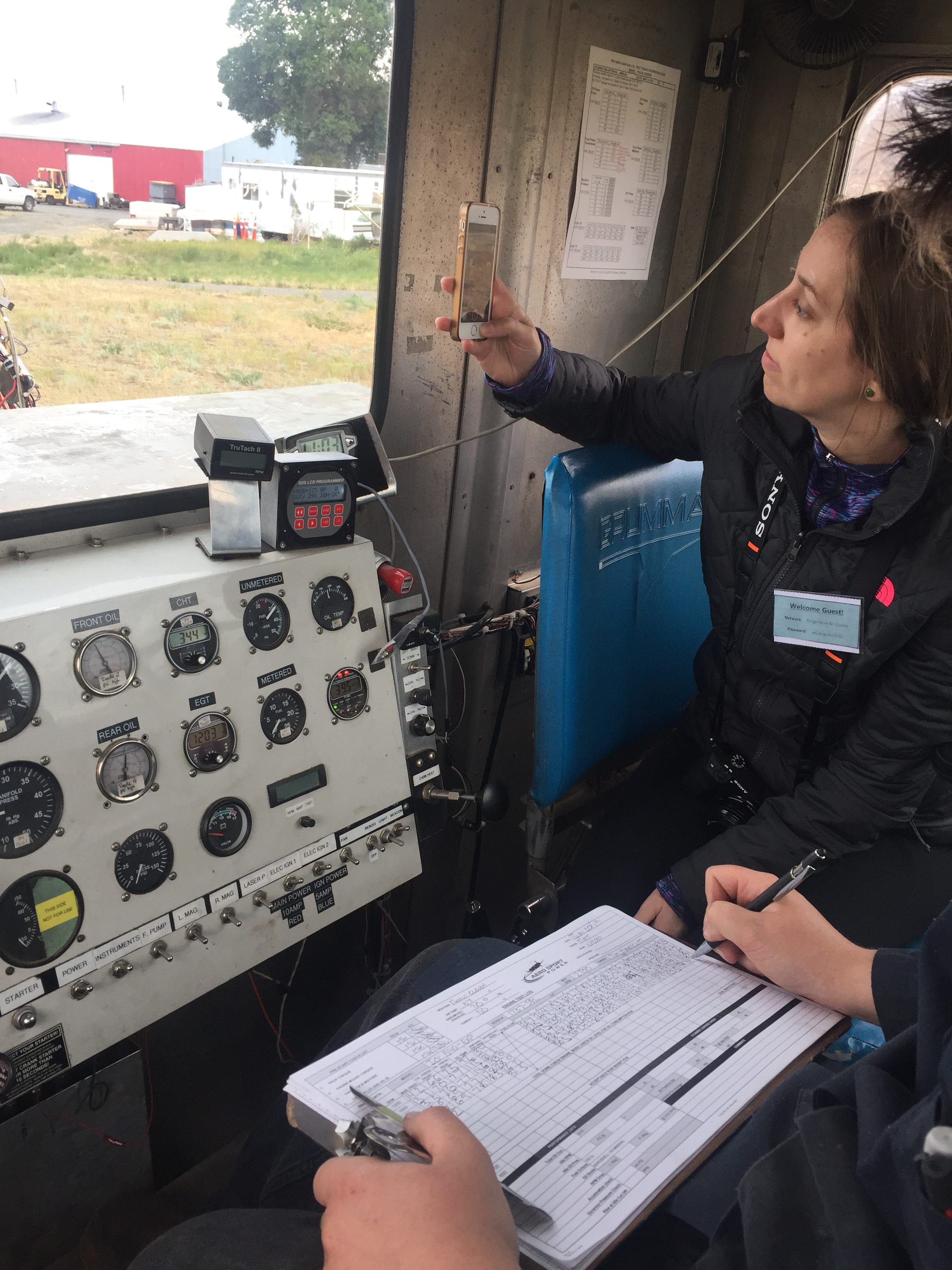
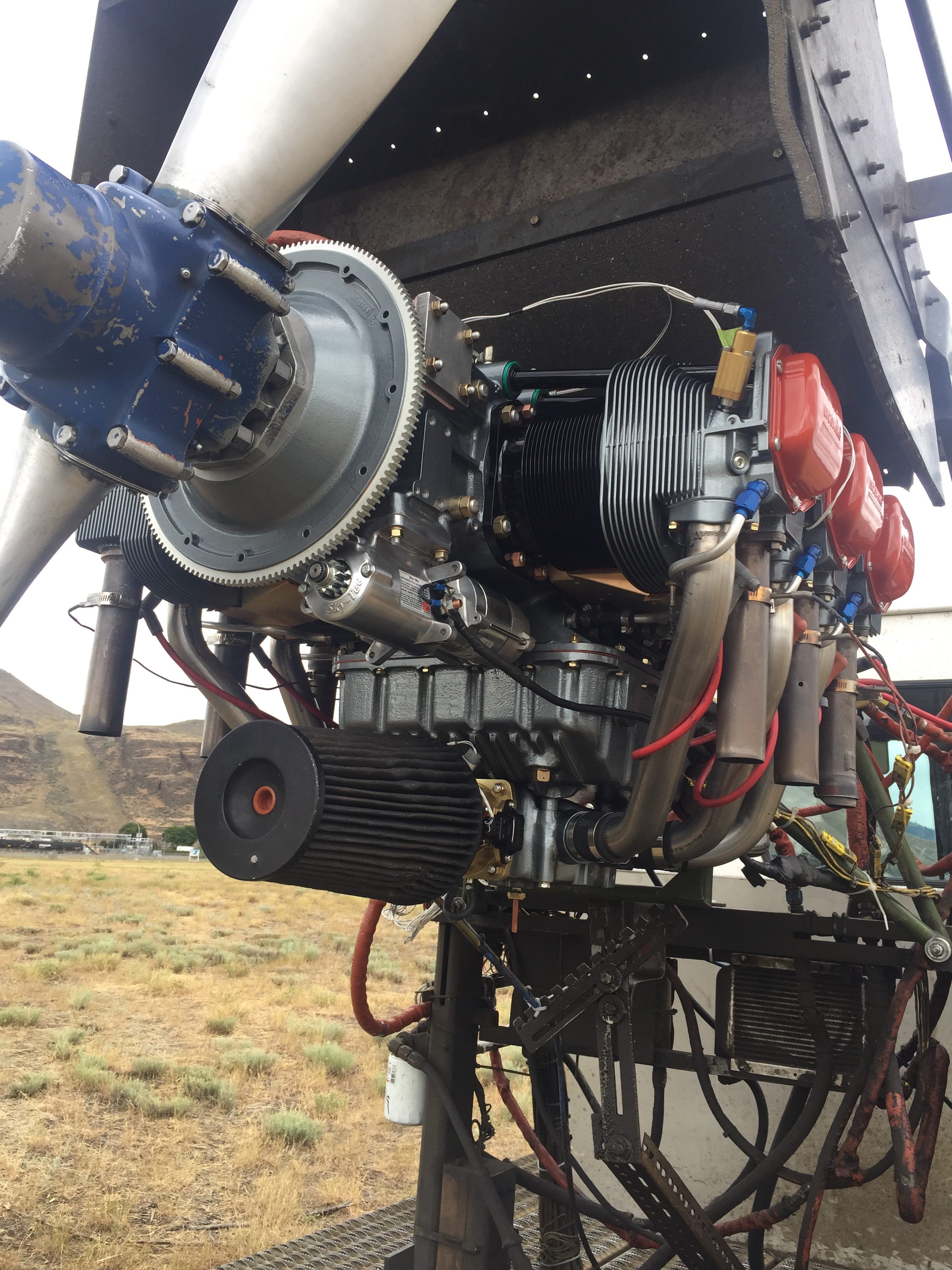
Running the engine at high power setting and avoid ground running was the biggest piece of advice given. A few other notes about power and rpm along with oil changes and temperature expectations were good information to have and a lot to take in. Meanwhile, the engine was removed from the test truck and had a complete checkout including draining the oil and checking the filter – no metal! All of our garlic sauce and grape jelly did its job. The tech will finish bolting the accessories on and preserve it for the few more months until we are ready to start it and go flying.
All too soon, it was time to say our goodbyes to the amazing team at Aero Sport Power. We really felt like family there after three short days and genuinely feel welcomed back at any time. I’m really excited to have the hands on experience of building my own engine and getting an understanding of how it is assembled and operates. It was some great father-son time as well and the memories will last long beyond first overhaul!
Random pictures:
